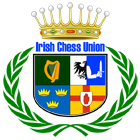

In the previous version of this website, editors had to write HTML in order to create or edit articles and news items. Now, however, it's possible to use Markdown instead which is much easier. See the original article and this Wikipedia article.
To illustrate the differences between HTML and Markdown, here is that last paragraph written in Markdown:
In the previous version of this website, editors had to write HTML in order to create or edit articles and news items. Now, however, it's possible to use **Markdown** instead which is much easier. See the [original article](http://daringfireball.net/projects/markdown/syntax) and this [Wikipedia article](http://en.wikipedia.org/wiki/Markdown).
Note the absence of tags for paragraphs (<p>...</p>), bold text (<b>...</b>) and links (<a>...</a>) which would have been required if the same thing was written using HTML.
Markdown has a deliberately limited syntax and isn't capable of producing arbitrary HTML. Even such simple and common things as an anchor tag or a target attribute in a link have no equivalent in Markdown. For this reason, whenever you need something Markdown can't handle, you can always just insert raw HTML. For example, here is a header using Markdown syntax along with an associated anchor tag using HTML.
<a name="rook_endings"></a> ### Rook Endings
For articles, although not for news items (which are generally too simple to require any fancey HTML), you can even turn Markdown processing off completely if you really want to and write entirely in HTML, but this is not recommended unless you need it.
Below is a quick summary of Markdown syntax. For futher help and inspiration, try looking at what other, more experienced editors have done. Although you can't edit the creations of other editors, you can, after logging in as an editor, see their raw input text by cicking the Source button at the bottom of their articles and news items.
Just enter two newlines to start a new paragraph.
Twas bryllyg, and the slythy toves did gyre and gymble in the wabe. All mimsy were the borogoves; and the mome raths outgrabe.
# Title Header (equivalent to <h1>) ## Section Header (<h2>) ### Sub-Section Header (<h3>)
*This text will be italic* _This will be underlined_ **This text will be bold** ~~This will be strikethrough~~ *You **can** combine styles*
Put the link text in square brackets followed by the URL in round brackets. For example:
[Ratings](http://ratings.icu.com)
See also Link Shortcuts in Articles and News Items for several custom shortcuts developed specifically for this website for quickly inserting links to various kinds of resources such as articles, news items and images. There's also a shortcut for a link with a target attribute (to open a new browser tab) which, as mentioned above, is one of the commonly required things Markdown can't handle.
* Item 1 * Item 2 * Item 2a * Item 2b
1. Item 1 1. Item 2 a. Item 2a a. Item 2b
I think here the move `Nf3` was called for.
As Emanuel Lasker said: > When you see a good move wait: > look for a better one